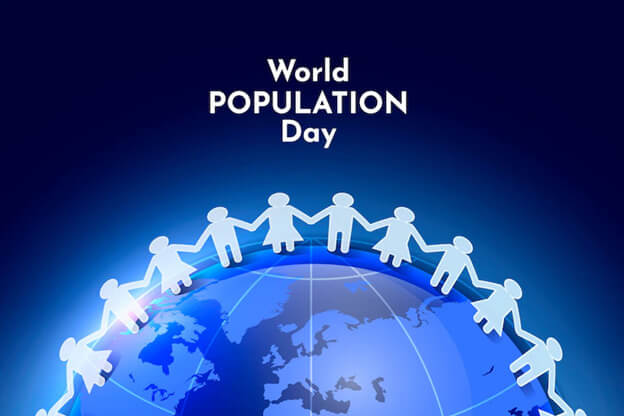Updated February 13, 2023
Global Population
The U.N. Development Programme’s Governing Council proposed in 1989 that the international community commemorate July 11 as World Population Day to draw attention to the urgency and significance of population-related concerns.
According to current estimates, the population of the globe grows by 83 million people per year. The medium-variant estimate predicts that the world’s population will be 8.6 billion in 2030, 9.8 billion in 2050, and 11.2 billion by 2100, even if fertility rates continue to fall. The medium-variant estimate predicts that the world’s population will be 8.6 billion in 2030, 9.8 billion in 2050, and 11.2 billion by 2100, even if fertility rates continue to fall.
World Population Day’s History
You may be aware that there are currently over 7 billion people on the planet, but how frequently do you pause to consider what that means?
In 1987, a day called “Five Billion Day” was established to commemorate what was thought to have been the official day when the world’s population surpassed five billion, which was allegedly dated July 11 of the same year. And just look at the population growth since then! Population-related issues include various topics, including modern contraceptives, gender equality, environmental effects, and human rights challenges.
The U.N. Development Programme’s (UNDP) Governing Council created World Population Day in 1989. The boosted draw in the keeping of “Five Billion Day” on July 11, 1987, suited the pace for this holiday. The General Assembly of the Nations declared this “World Population Day” day, and in December 1990, resolution 45/216 formalized this.
Objective of World Population Day
The objective of World Population Day is to entice attention to the increasing problems that come with an expanding global population. At the start of the unsustainable pace at which the world’s resources are being used up, overpopulation is a serious concern.
It is important to know how population enlargement affects development and the environment. The expanding population highlights women’s health issues throughout pregnancy and childbirth, emphasizing the importance of prenatal care, women’s rights, and maternity care. Population pressure is also putting a burden on society, as significant abuses of sexual and human rights are occurring more frequently than ever before, particularly in developing countries.
As more people enter the world, abuses like child trafficking and child labor become more common since the government is already doing a poor job of caring for its residents.
What is the Significance?
The celebration’s main goal is to draw attention to the community’s residents’ reproductive health issues, which are the world’s leading cause of maternal mortality and ill health. Our World Population Day campaign annually broadens public awareness of reproductive health issues and family planning techniques. Through this fantastic awareness event, individuals are urged to learn about population problems like the significance of Family planning in light of the growing population, gender equality related to pregnancy and infant health, poverty, human rights, the right to social security, and sexuality education.
And the use of modern contraception and other protective measures like condoms, reproductive health, early pregnancies, girl child education, child marriage, and sexually transmitted infections, among other issues. Solving sexuality-related problems among young people, especially those aged 15 to 19, is crucial. It is a human right to have access to secure and voluntary family planning.
It is essential to achieving gender equality, empowering women, and eradicating poverty. Investments in expanding access to family planning produce additional economic and non-economic benefits that can advance development.
Observing World Population Day
1. Learn for yourself
There is a wealth of information about population issues available. So conduct some study on World Population Day. The U.N. Population Funding, the central U.N. organization managing population cases, is a great spot to begin.
2. Spread that knowledge throughout your networks
That suggests that it’s probably either your following, friends, and family. Ask people to consider these challenges and what they could do to help on World Population Day.
3. Donate to groups that address population issues
Countless outstanding nonprofits and NGOs are working tirelessly to address population challenges, particularly in poor countries. They consist of institutions that assist individuals in escaping poverty, teach women about contraceptives and family planning, and assist those forced from their homes due to human rights violations or the environment.
Recommended Articles
We hope that this EDUCBA information on “World Population Day” was beneficial to you. You can view EDUCBA’s recommended articles for more information,

